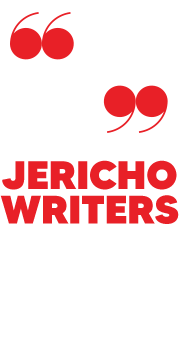This post will tell you how to increase book sales on amazon, primarily by using categories and keywords.
The ever-rising power of the Amazon Kindle Store in the publishing market offers the possibility of extremely lucrative book sales for self-published writers.
However, to get visibility in the Amazon charts, you need to be deadly smart about the categories and keywords (the ‘metadata’) you choose for your book in order to get maximum sales.
Luckily for us, guest author and blogger, Dave Gaughran, is here with his many successful years’ experience as a self-published author to explain how you can get the most sales out of your book on Amazon. This is an adapted excerpt from the third edition of Let’s Get Digital: How To Self-Publish, And Why You Should by David Gaughran, available from Amazon and other retailers.
You can find our own complete self-publishing guide right here and advice on which ebook format to use here, should you need it.
Categories And Keywords On Amazon Kindle
Why it pays to be smart with your metadata
Authors are an impatient bunch. In the eagerness to share our scoundrel rakes and dastardly villains with the reading public, we can often rush through critical steps, and miss powerful, free opportunities for visibility in the Kindle Store — a classic example being keywords and categories.
Many writers give little thought about metadata until confronted with the box on KDP, which is hardly the optimal time to be researching keywords and categories. Best to be well-prepared so you are not caught short during a stressful launch.
You can rather cleverly “bake in” little bits of marketing and discoverability into your book. This is all that is meant by the somewhat intimidating phrase of “optimizing your metadata” — you’re simply attaching the right pieces of information so retailers know what kind of book it is and fans of that genre can find it more easily.
If you are smart about metadata, you can give yourself a huge advantage over much of the marketplace, and increase your kindle book sales on amazon.
How To Choose Categories
Most publishers — even the largest — have only a rudimentary understanding of Amazon’s store, categories in particular. You often see books from huge authors in sub-optimal categories, decreasing their visibility in the biggest bookshop in the world, and hurting their chances of being discovered by readers, even ones searching for that exact kind of book.
Publishers will fail to use all categories available to them or, without drilling down further, will choose something generic like Fiction, which is useless as a category unless you are at the very top of the Amazon rankings. Just choosing the right subcategory for your work can give your book a real head start.
You only get two choices when uploading. As I will explain in the next section below, smart keyword picks can get you into additional sub-categories, but they must be related to the categories you pick now, so you must choose wisely.
Appearing in the Top 100 of Fiction in the US Kindle Store requires a tremendous number of sales — around 650 in a single day — which will be beyond us most of the time. However, choosing Fiction as a category is a waste for a much simpler reason: electing a subcategory of Fiction will get you into the Fiction category as well.
Even if you drill down several levels to choose something like Kindle Store > Kindle eBooks > Fiction > Mystery, Thriller & Suspense > Thrillers > Political, your book will still show in all the top-level categories above the one you have chosen (i.e. each of Fiction; Mystery, Thriller & Suspense; Thrillers).
When you pick something more specific, you are multiplying your potential visibility opportunities rather than restricting them, and more successfully promoting your book. Each one of those sub-categories has a Top 100 of its own, and qualifying on those charts requires a much more manageable number of sales. If your book is doing particularly well, you will appear on a number of Top 100 lists, all of which will bring you new readers.
Wherever possible, it’s wise to choose categories in which you can compete. Let’s say you have written a Contemporary Inspirational Romance, more Nicholas Sparks than Fifty Shades. If you pick Romance > Contemporary as a category you will need a rank of #500 or better to hit the back of the Top 100, which is 200 sales a day, or more. It’s a competitive category.
But you have alternatives. The competition is a little less tough in Romance > Inspirational, where a rank of around #3,000 will get you into the back of the chart, around 80 sales a day. A little more manageable, and even more so if you drill down to the sub-categories under Romance > Inspirational. A little nosing around the Kindle Store might turn up more suitable opportunities, such as Romance > Clean & Wholesome.
Qualifying for that Best Seller list requires a rank of about #10,000 or in the region of 20 sales a day. This is starting to seem more achievable, particularly if you consider what you might be selling during or after a promotion.
Also remember that new books qualify for Amazon’s Hot New Releases charts, which are even more attainable. At the time of writing, only one sale a day is needed to hit the back of the Clean & Wholesome Hot New Releases chart. Of course, there’s no point picking a less competitive sub-category if it’s not a relevant choice for your book.
Going through potential sub-categories can indicate the relative size of each genre and subgenre, and can also help you identify a category that might provide an easier path to visibility. Be warned, however, that a very small category might not receive a lot of reader traffic. If the lists are small and stagnant, readers may not return to be faced with the same books each time.
As a self-publisher, you have just two categories to play with. It can be a good approach to pick one competitive category you occasionally qualify for, and one that is a little less competitive and enables you to always hit the Best Seller list. This way, you have a chance of front-page action in a smaller category, plus you’re covered if you have a good run of sales and start moving up the Best Seller list of a more frequently browsed category.
You may wish to freshen up your category choices at some point to hit new readers. Or your sales may increase to the point where you feel confident about charting in those bigger categories, which will naturally attract more browsers and lead to more sales. Alternatively, you may realize you were targeting the wrong readers and need to tweak your approach. It’s always good to have alternatives.
Just be careful that your book is a good fit for the categories you are playing with. You don’t want to incur the wrath of romance readers because your book doesn’t have a happily ever after. And if you don’t know what that is…
Like virtually all ebook retailers, Amazon gives you numerous category choices when uploading your book or making changes. These are based on BISAC subject headings, which are industry standard. However, it’s extremely important to note that these don’t always reflect the actual categories in the Kindle Store.
I could go into this in granular detail but all you need to know right now is that it’s important to first identify your optimal categories by browsing Amazon as your target readers might. But if you want to learn more about categories you can get a free copy of Amazon Decoded: A Marketing Guide To The Kindle Store by signing up to my mailing list. It’s the only place you can get that book at the moment, and you can unsubscribe right away if you wish.

How To Choose Keywords
The final piece of metadata you need to consider are keywords. Great keywords give two killer benefits. First, you can expand your number of assigned categories. Second, you will appear higher in search results on Amazon. You need to consider both angles. (At this point, you might be considering looking for a publisher instead but, trust me: they don’t know this stuff.)
For any given search term entered by a reader, Amazon’s system will return a list of books it considers relevant. Relevancy is determined by a number of factors, including keywords, your book’s title, and subtitle. You may not have too much wiggle room with your book’s title, although, for non-fiction, putting keywords in the title is very important; for example, Let’s Get Digital: How To Self-Publish, And Why You Should or Guitar Mastery Simplified: How Anyone Can Quickly Become a Strumming, Chords, and Lead Guitar Ninja.
You only get to choose seven keywords, so make sure they are relevant to your book. Try to put yourself in the shoes of one of your target readers, and picture the kind of terms they might enter into the search box when looking for books.
Each “keyword” can actually be made up of several separate words as long as you remain within the limit of 50 characters. Try to maximize the opportunities here. You want to increase your categories and cover what readers might search for, although the latter is much more important for non-fiction than fiction.
Some examples: my book Liberty Boy is set in Dublin in 1803, in the aftermath of a failed rebellion against the British. It’s a plot-driven historical novel, with some slight literary inclinations.
In this case, expanding categories is most important, as historical fiction readers use Amazon charts to browse for new recommendations, and don’t use Search as much to find books. By consulting this list on KDP Help of extra categories, I immediately get keyword ideas.
My two primary categories for that book are Historical Fiction and Literary Fiction. I can then expand my footprint by choosing keywords like “18th century,” “19th century,” “politics,” “politician,” “military,” and “love.” I myself can think of things that might be appropriate for the book like “Ireland,” “Irish,” “British,” “history,” “historical novel,” “historical fiction,” “literary fiction,” and so on.
We can combine some of those to optimize the space. With that in mind, I might have “historical novel literary fiction” as one keyword and “Ireland Irish British history book” as another. And then I’ll appear for variations of those searches, like “Irish history” or “historical fiction.” You can change these keywords at any time, so don’t worry if it’s not perfect the first time out.
With a non-fiction, search becomes much more important — and there are few appropriate categories to add with keywords. Try to make a comprehensive list, then be artful with how you maximize your allotted keyword space.
At all times though, only choose relevant keywords. You don’t want to appear to anyone outside your target audience; that only works against you, something I’ll explain in comprehensive detail later.
Metadata might not be the sexiest topic in the world, but getting smart about it can give you a real advantage, one that costs you nothing but a little effort.
With a pair of well-chosen categories and a set of smart keywords, you will make your book instantly more discoverable and expand your footprint in the world’s biggest bookstore.
And it won’t cost you a penny, either.
The updated and expanded third edition of David’s Let’s Get Digital: How To Self-Publish, And Why You Should is available from Amazon and all other retailers. David has helped thousands of authors self-publish via workshops, blog, and books, and you could be one. Visit DavidGaughran.com to sign up to his mailing list and get a free copy of Amazon Decoded.
Jericho Writers is a global membership group for writers, providing everything you need to get published. Keep up with our news, membership offers, and updates by signing up to our newsletter. For more writing articles, take a look at our blog page.











